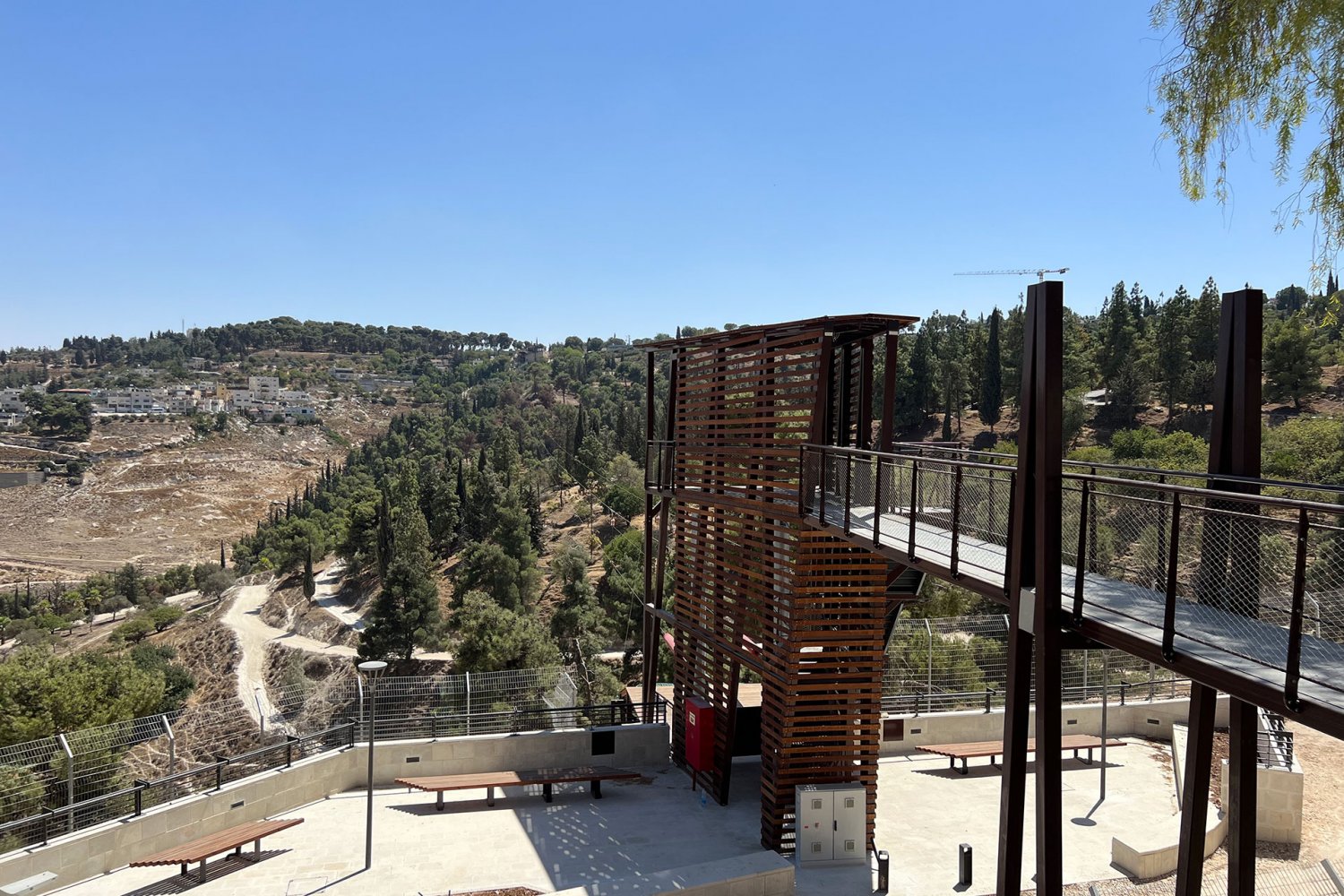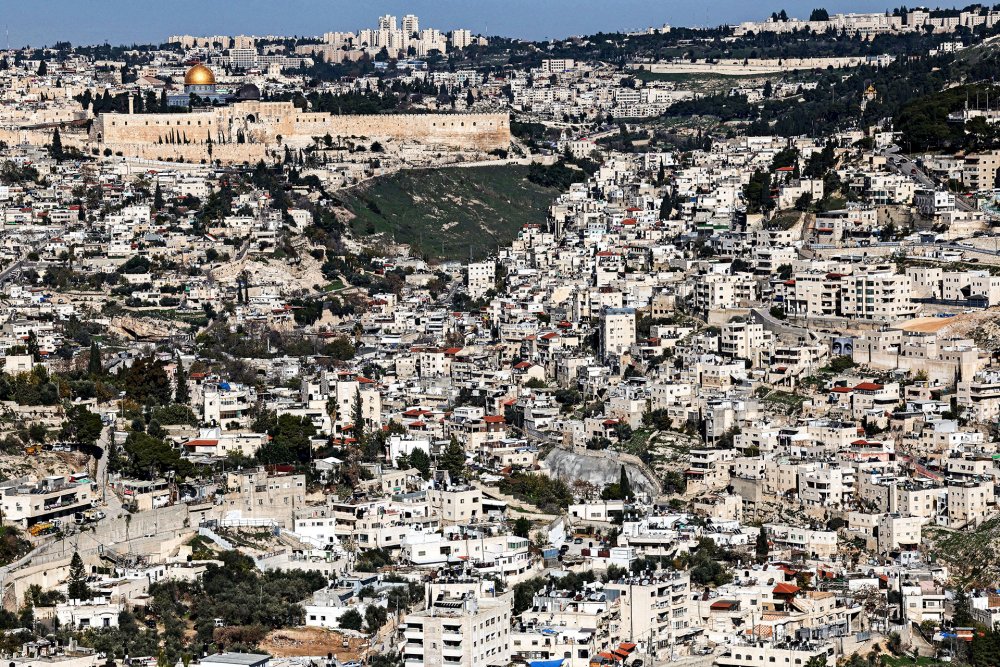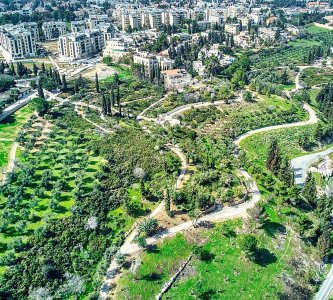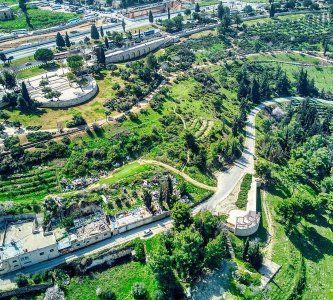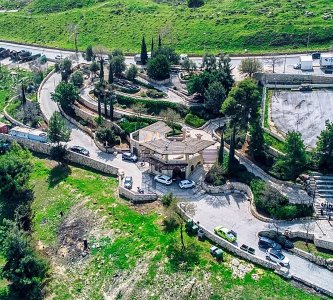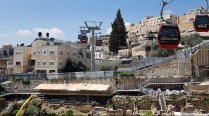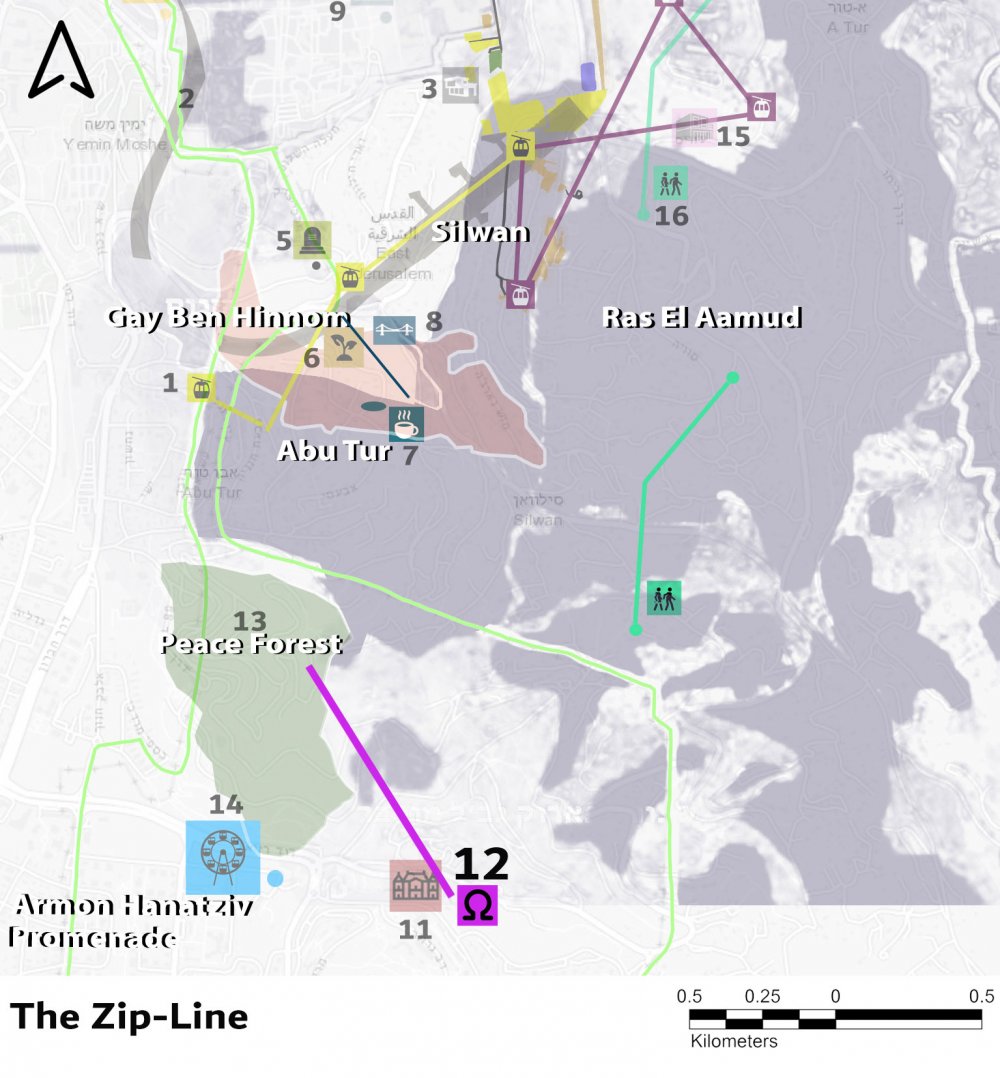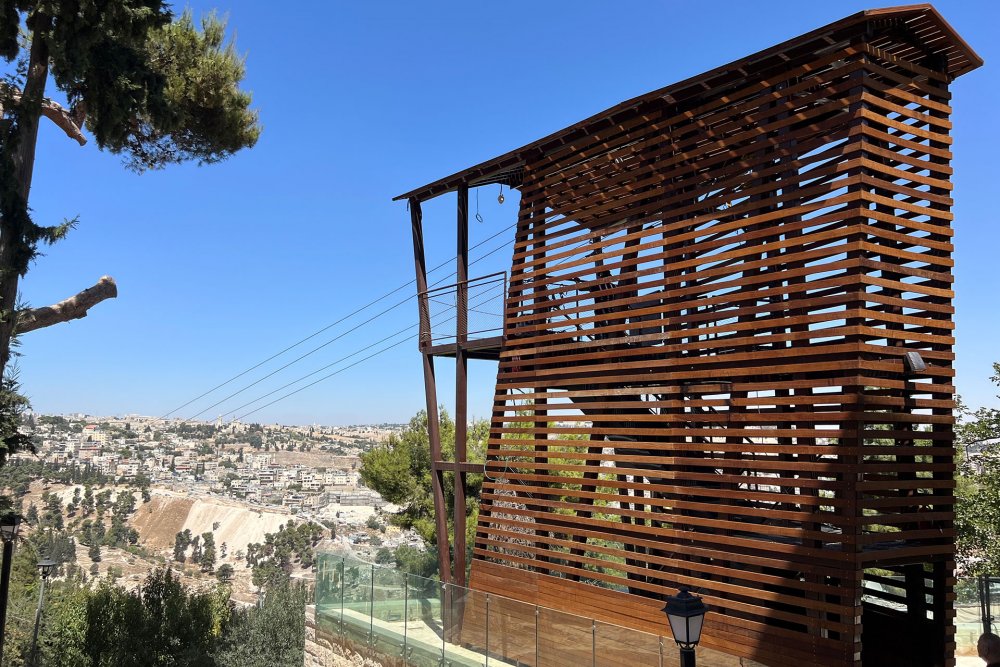Over the 2024 summer, Israeli settler group the Ir David Foundation, also known as the Elad Association, debuted its latest touristic venture to the Jerusalem public: a nearly half-mile-long zip line.1
Hanging over the Palestinian neighborhood of al-Farouk2 and adjacent to the Palestinian neighborhoods of Jabal Mukabbir and Abu Tur in Jerusalem, the zip line connects two of Ir David’s sites, Beit Schatz visitor’s center and the “Peace Forest” camping ground, acting as a way to bypass Palestinian spaces and create an experience that deceptively conveys that the city is largely or only Jewish. They also add to the “Disneyfication” of an ancient city (see Israel’s Disneyfication of Jerusalem Seeks to Erase Palestinians’ Historic Presence).

